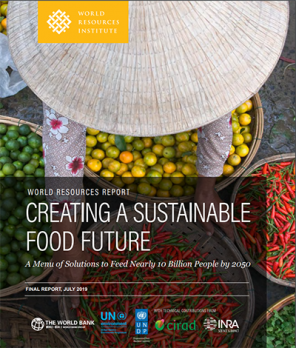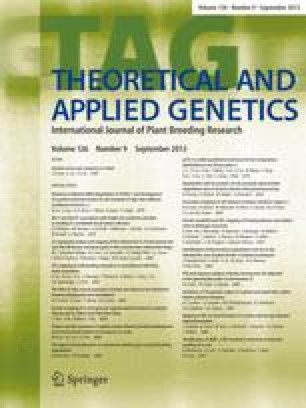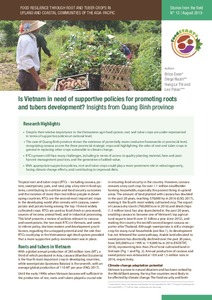A new report from the World Resources Institute points to ways in which roots, tubers and bananas are important ingredients of future food security. Creating a Sustainable Food Future examines three crucial gaps that must be filled to achieve sustainable food security: the amount of nutritious food that will need to be grown, the amount of land needed to produce that food and the amount by which greenhouse gas emissions need to be reduced.
“It is a very valuable report,” said Dr Jean-Christophe Glaszmann, a plant breeder at the French Agricultural Research Centre for International Development (CIRAD) and a member of the CGIAR Research Program on Roots, Tubers and Bananas (RTB) Independent Steering Committee. Glaszmann believes it will help RTB to fine-tune some priorities and help to justify those priorities to donors and others.
Tackling waste
For example, the report presses for a reduction in food loss and waste, which on its own would reduce demand for greater production and save some greenhouse gas emissions. But where many links in the food chain each contributes a small amount of waste, it can be hard to reduce losses. The report looks at gari, a traditional type of fermented product made from cassava, most of it by women and their children on a relatively small, household scale. One Nigerian study of gari estimates that about half of the cassava harvested is lost, and of this, the largest loss occurs as cassava roots are peeled to make gari.
RTB is already reducing cassava waste on several fronts. A quick win is to process the cassava peel into feed for livestock and fish, both eliminating waste and creating opportunities for new employment. On a longer timescale, the CGIAR Gender and Breeding Initiative is working to understand how the somewhat different traits that women and men prefer can be addressed in breeding programs, to improve productivity and accelerate adoption while creating equitable benefits for both genders.
Adopt the orphan crops
Glaszmann points out that traditional breeding of the vegetatively propagated RTB crops is “complex and slow,” which also makes them unattractive to private companies. Cassava, sweetpotato and yam are among the 22 orphan crops that the WRI report says would benefit from extra attention. If the yield of these orphan crops could be increased to even half of their potential, it would make a greater contribution to the food security of smallholder farmers than improvements in any other crop.
One future target identified by the CGIAR Gender and Breeding Initiative could be a cassava trait that women describe as “swellability”. The trait is one they value, so improving it would enhance adoption. It depends in a complex way on the distinct starches and other compounds, such as pectin, in the roots, and while the pursuit of this quality is still in its very early days, new genetic tools such as genome editing are already showing promising results.
“Vegetatively-propagated orphan crops can now benefit from new knowledge and are likely to draw greatest benefits from the development of genome editing,” Glaszmann said.
The report points out that roots and tubers are very efficient sources of pure energy, just behind rice in terms of the land needed but vastly better in terms of greenhouse gas emissions. They lack protein, but if that can be provided from other plant sources, then increasing the productivity of roots and tubers offers the double win of more food with lower emissions. Roots and tubers can also be productive on land that is not suitable for major crops such as wheat or maize.
A different kind of report
Creating a Sustainable Food Future differs from the other large reports also published recently, from the IPCC and IBPES, because it is more of a planning document than a literature review, according to Dr Patrice Dumas of CIRAD, who researches land use and agriculture. CIRAD is an implementing partner in RTB and Dumas and others worked to develop the WRI model.
Dumas explained that the other reports interpreted results from several studies, often with different methodologies and hypotheses, to draw their conclusions. “We used data to build a single model, which makes predictions that allow planning.”
Dumas cautions that the relative neglect of RTB crops means that the data may be less reliable than for major crops. “But I don’t know how accurate the figures are for cereals either,” he said. “Better data is always better.”
The report offers several suggestions for closing the gaps it focused on and adds to the information available to donors. It clearly calls for more research, including breeding, on RTB crops. Improvement of breeding programs is a key focus for RTB’s Flagship Project 1 on Enhanced Genetic Resources, which is developing and applying leading-edge science to build advanced tools, methods, and models that improve the accuracy and speed of root, tuber and banana breeding.
The WRI report makes clear the important role that these staple crops will play in future food security, especially for smallholder farmers, and Glaszmann believes there is a pressing reason to focus on RTB crops.
“The gains are likely to be larger for those crops that have not received much attention so far,” he said. “This is probably why rates of yield growth have been high for RTB crops recently.”
As the report makes clear, increased investment in RTB crops will help to fill the gaps, delivering more food from the same amount of land, with less waste and lower greenhouse gas emissions.



